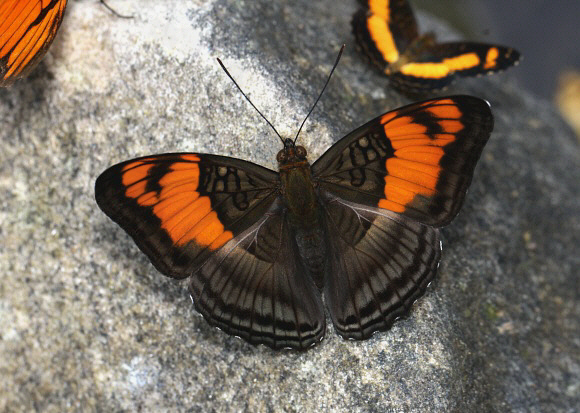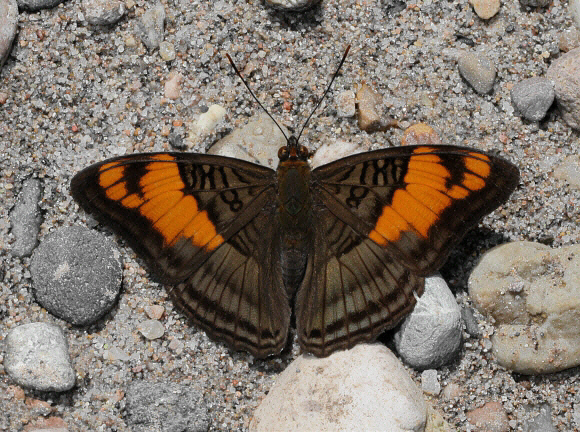
Introduction
Adelpha butterflies are colloquially known as ‘Sisters’. There are 85 known species, all except two of which are confined to the neotropics. The butterflies are characterised by having a distinctive black marbled pattern overlaid on an earthy brown ground colour; and by the presence of a broad orange or white band on the forewings. The hindwings of many species have a white median band.
There are several Adelpha species that feature a broad orange band on the forewings, but lack any orange or white markings on the hindwings. In most of these species the orange fw band starts mid way along the costa and terminates at the tornus. In contrast mesentina the band runs vertically and terminates half way along the inner margin.
Adelpha mesentina occurs in the eastern Andes from Venezuela to Bolivia, on the Guyana shield, and throughout central and western Amazonia. It is a common species in the southern Amazon, e.g. in Mato Grosso, Rondonia and Madre de Dios.
Habitats
Adelpha mesentina breeds in lowland and mid-elevation wet forest habitats at altitudes between sea level and about 1200m.
Lifecycle
I have no data specific to mesentina. The following generalisations apply to the genus Adelpha: The eggs of most species are white or pale green, and are laid singly on leaves of the foodplants which include Rubiaceae, Moraceae, Urticaceae, Verbenaceae, Melastomaceae, Bombacaceae, Ulmaceae, Piperaceae, Tiliaceae or Ericaceae according to species. The young larvae nibble away at the tips of leaves, leaving the midrib projecting. They construct a chain of frass along the midrib and rest at the end of it. The frass chains appear to act as a deterrent to ants, spiders and parasitoids which find it difficult to walk on them. When fully grown the larvae are cryptically coloured and resemble bird droppings, mossy twigs or bits of curled up dead leaf.
They have 2 rows of conspicuous spines along their backs, those on the first two segments being enlarged and directed forward, while the third pair are directed backward. The pupae, which are suspended by the cremaster, are in some species green or brown, while others are entirely silver, and shiny. The pupae of some species are decorated with numerous spikes and projections, and sometimes have very prominent palpi.
Adult behaviour
Adelpha mesentina is almost always encountered in two’s and three’s, usually in the company of other Adelpha species.
Males often visit damp ground to imbibe mineral rich moisture. They normally settle for several minutes at a time, and hold their wings flat when feeding. In exceptionally hot weather they feed with wings held erect.

